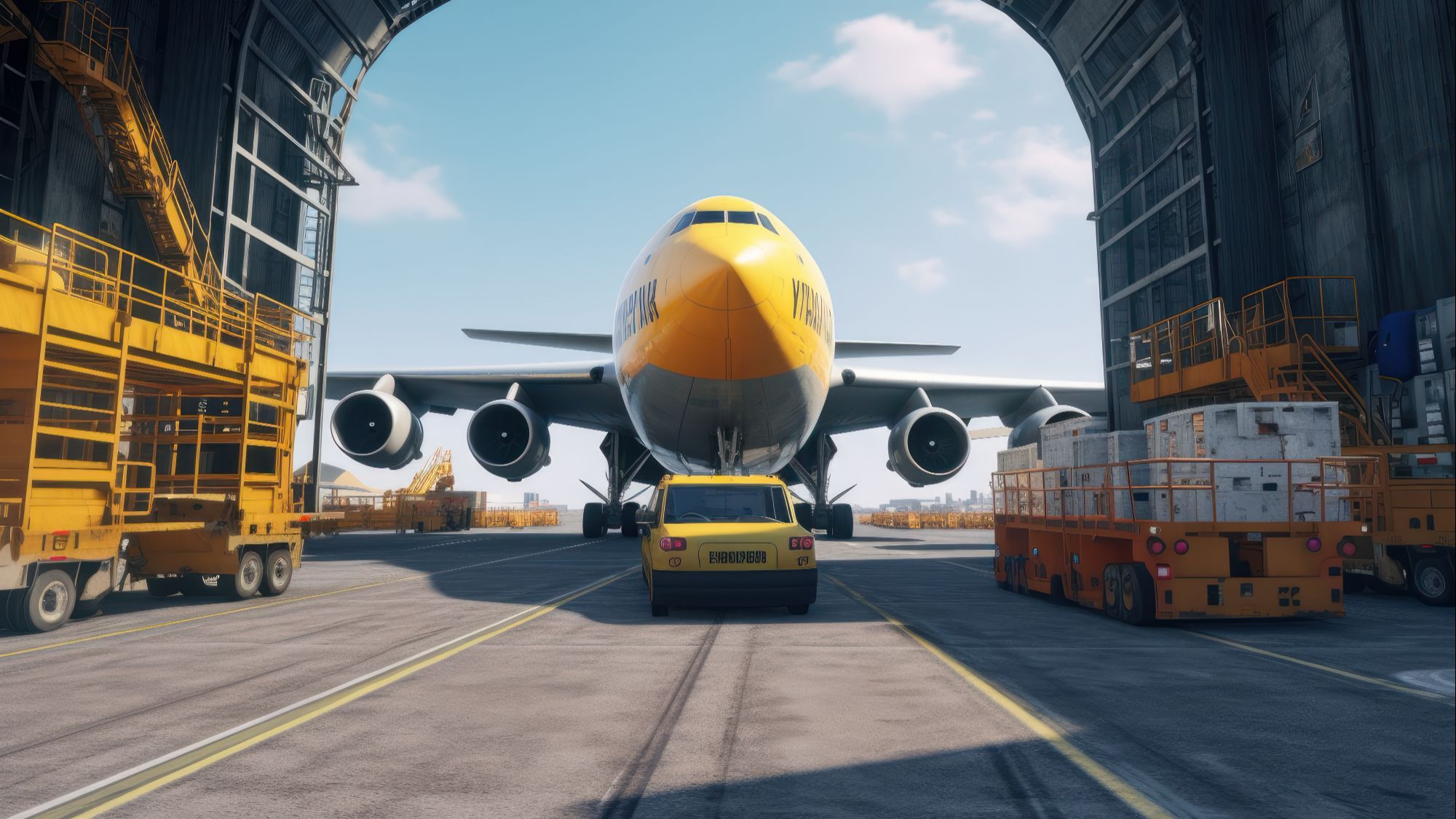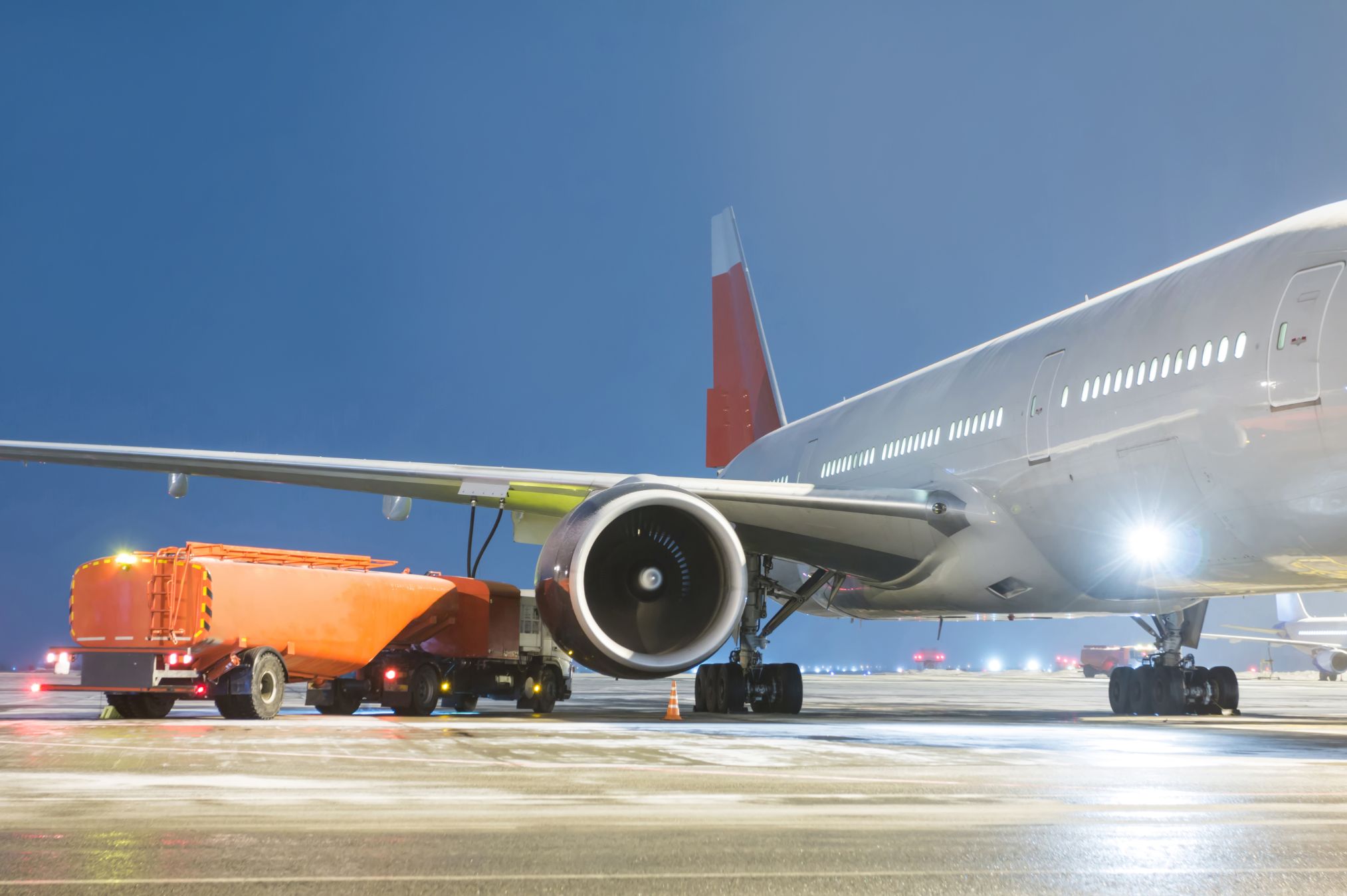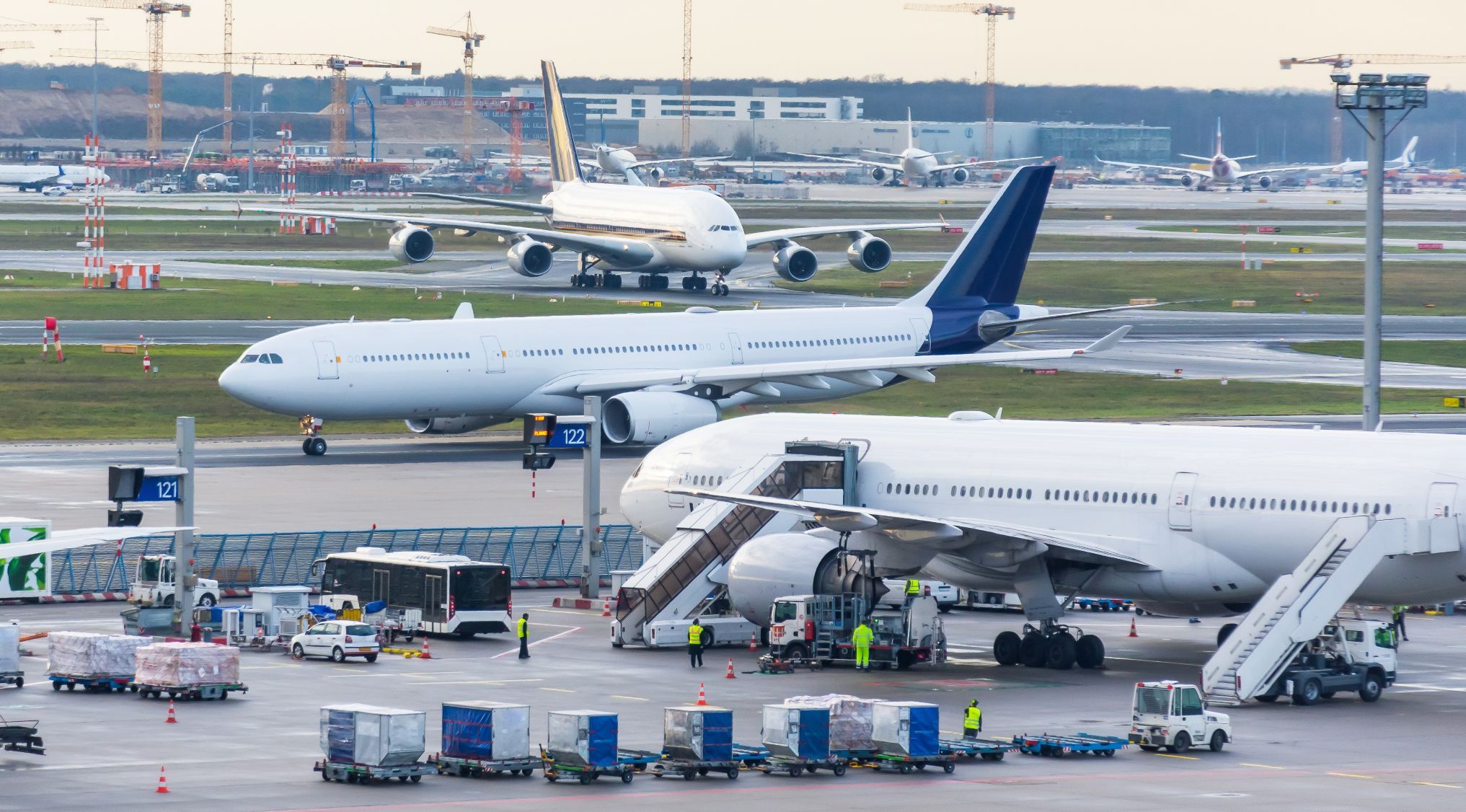The Intricacies of Domestic Air Freight Logistics: A Comprehensive Overview

In the dynamic realm of logistics, where time sensitivity and efficiency are paramount, domestic air freight plays a pivotal role in ensuring the seamless movement of goods across a nation. This article delves into the intricacies of domestic air freight logistics, providing a comprehensive overview of the processes, challenges, and innovations that define this critical aspect of the supply chain.
Introduction to Domestic Air Freight Logistics
Domestic air freight logistics involve the transportation of goods within a country using air carriers. This mode of transportation is characterized by its speed and reliability, making it particularly suitable for time-sensitive shipments, perishable goods, and high-value items.
Key Components of Domestic Air Freight Logistics
Cargo Handling and Packaging:
- Efficient cargo handling is crucial to ensure the timely loading and unloading of goods. Proper packaging is essential to protect items during transit and minimize the risk of damage.
Freight Documentation:
- Accurate and complete documentation is a cornerstone of air freight logistics. This includes air waybills, invoices, and other regulatory documents required for customs clearance.
Customs Clearance:
- Navigating the complex landscape of customs regulations is a critical aspect of domestic air freight. Timely clearance ensures that shipments move swiftly through the supply chain.
Transportation Network:
- An extensive and well-connected transportation network is essential for the efficient movement of goods from the origin to the destination. This includes ground transportation to and from airports.
Technology Integration:
- The use of technology, including tracking systems and real-time monitoring, enhances visibility and transparency in the supply chain, enabling stakeholders to make informed decisions.
Challenges in Domestic Air Freight Logistics
Capacity Constraints:
- Limited cargo space on domestic flights can lead to capacity constraints, especially during peak seasons. This challenge necessitates strategic planning to optimize space utilization.
Regulatory Compliance:
- Keeping abreast of ever-changing regulations and ensuring compliance with customs requirements is a persistent challenge in domestic air freight logistics.
Cost Considerations:
- While air freight is renowned for its speed, it can be a costlier option compared to other modes of transportation. Balancing speed and cost-effectiveness is a constant challenge for logistics professionals.
Security Concerns:
- The high value of air freight shipments makes them susceptible to security risks. Implementing robust security measures is essential to safeguard against theft or tampering.
Innovations Shaping the Future
Drone Technology:
- The use of drones for last-mile deliveries is gaining traction, particularly in remote areas. This technology has the potential to revolutionize the speed and accessibility of domestic air freight logistics.
Blockchain for Transparency:
- Blockchain technology is being explored to enhance transparency and traceability in the supply chain. This can streamline documentation processes and reduce the risk of errors.
Data Analytics for Predictive Planning:
- Leveraging data analytics allows logistics providers to analyze historical trends and make informed decisions, optimizing routes, and improving overall operational efficiency.
Domestic air freight logistics, with its emphasis on speed and reliability, is a critical component of the modern supply chain. Navigating the intricacies of this dynamic sector requires a strategic approach that addresses challenges while embracing innovative solutions. As technology continues to evolve, the landscape of domestic air freight logistics is poised for further transformation, promising enhanced efficiency and responsiveness to the ever-changing demands of the global marketplace.
The Domestic Air Freight Process

In the dynamic landscape of global trade and commerce, the efficient movement of goods is paramount. Air freight stands as a vital component of this logistics puzzle, providing swift and reliable transportation for a wide array of products. This article delves into the intricacies of the domestic air freight process, shedding light on its key components and the seamless orchestration required to ensure the smooth delivery of goods.
1. Origin and Documentation:
The journey of a domestic air freight shipment commences at its origin point. Prior to departure, meticulous documentation is essential. This includes the preparation of airway bills, invoices, packing lists, and any other relevant paperwork. Accuracy in documentation is critical, as errors can lead to delays and disruptions in the supply chain.
2. Cargo Acceptance and Handling:
Once the documentation is in order, the cargo is accepted by the air freight carrier. At this stage, the shipment undergoes thorough inspection to ensure compliance with safety regulations. The handling process involves careful loading and securing of the cargo within the aircraft. Special attention is given to fragile or perishable items, and strict adherence to weight and size restrictions is maintained.
3. Transportation to the Airport:
Transportation to the airport is a pivotal step in the domestic air freight process. Efficient coordination between ground logistics providers and the air carrier is crucial to meet tight schedules. Specialized vehicles equipped to handle various types of cargo transport the shipments to the designated airport.
4. Security Screening:
Security is a top priority in air freight. All shipments undergo rigorous security screening to detect and prevent the transport of prohibited items. This screening process adheres to stringent regulations set forth by aviation and transportation authorities, ensuring the safety of both cargo and passengers.
5. Departure and Flight:
With security clearance obtained, the cargo is loaded onto the aircraft. Flights are scheduled based on factors such as destination, urgency, and available cargo space. During the flight, the air carrier continuously monitors and manages the cargo, adapting to any unforeseen circumstances that may arise.
6. Arrival and Customs Clearance:
Upon reaching the destination airport, the cargo undergoes customs clearance. This involves inspection by customs officials to verify the accuracy of documentation, assess duty and taxes, and ensure compliance with import regulations. Timely and accurate customs clearance is essential for expediting the onward journey of the goods.
7. Ground Transportation to Final Destination:
Once cleared, the domestic air freight shipment is transported from the airport to its final destination. This leg of the journey involves close collaboration between ground transportation providers and the air carrier to maintain the integrity of the supply chain.
8. Final Delivery and Acknowledgment:
The last stage of the process involves the final delivery of the goods to the consignee. Confirmation of delivery is obtained, and any discrepancies are promptly addressed. The consignee acknowledges receipt, completing the domestic air freight cycle.
The domestic air freight process is a sophisticated and well-coordinated series of steps, requiring precision and collaboration at every stage. From meticulous documentation to secure handling, timely transportation, and seamless customs clearance, each element contributes to the overall efficiency of the air freight logistics system. As global trade continues to evolve, the importance of a reliable and streamlined domestic air freight process cannot be overstated.
Navigating the Regulatory Landscape of Domestic Air Freight

The smooth operation of domestic air freight is contingent upon adherence to a complex web of regulations. These regulations, designed to ensure safety, security, and efficiency, can pose challenges for businesses involved in the air freight industry. Navigating this regulatory landscape requires a comprehensive understanding of the various rules and guidelines that govern the movement of goods by air within a country. In this article, we will delve into the key aspects of the regulatory framework for domestic air freight and explore how businesses can navigate these challenges to maintain compliance and optimize their operations.
Regulatory Authorities and Frameworks
a. Federal Aviation Administration (FAA):
The FAA is a pivotal regulatory body in the United States responsible for overseeing civil aviation. For domestic air freight, the FAA sets standards for aircraft operations, certification, and air traffic control. Compliance with FAA regulations is paramount to ensure the safety and reliability of air cargo operations.
b. Transportation Security Administration (TSA):
Security is a critical concern in air freight, and the TSA plays a central role in enforcing security measures. Businesses engaged in domestic air freight must adhere to TSA regulations regarding cargo screening, personnel security, and the secure transportation of hazardous materials.
c. Customs and Border Protection (CBP):
CBP regulates the entry and exit of goods, including air freight, into and out of the country. Compliance with CBP regulations is essential for smooth customs clearance and to avoid delays or penalties. Understanding import and export requirements is crucial for businesses engaged in cross-border air freight.
Compliance with Safety Standards
a. Aircraft Maintenance and Inspection:
To ensure the airworthiness of cargo aircraft, compliance with maintenance and inspection standards is non-negotiable. Regular inspections, maintenance schedules, and adherence to manufacturer guidelines are essential components of compliance with safety standards.
b. Pilot and Crew Training:
Human factors are critical in air freight safety. Compliance with training standards for pilots and crew members, as outlined by the FAA, is essential to guarantee the competency and readiness of personnel involved in air cargo operations.
Documentation and Record-Keeping
a. Air Waybills and Shipping Documentation:
Accurate and complete documentation is crucial for the movement of air freight. Compliance with standardized documentation, such as air waybills, ensures that the necessary information is available for customs clearance, tracking, and accountability throughout the transportation process.
b. Record Retention:
Regulatory authorities often require businesses to maintain records for a specified period. Adherence to record retention requirements, including documentation related to cargo, maintenance, and personnel, is crucial for audits and inspections.
Environmental Considerations
a. Emissions and Noise Regulations:
Environmental concerns are increasingly shaping regulatory frameworks. Compliance with emissions standards and noise regulations is essential for businesses to minimize their environmental impact and meet evolving sustainability requirements.
Technology Integration
a. Electronic Data Interchange (EDI):
Embracing technology, such as EDI, facilitates compliance with regulatory requirements by streamlining communication and data exchange between stakeholders. Automation of processes enhances accuracy and efficiency, reducing the risk of errors and ensuring timely regulatory compliance.
Challenges and Strategies for Compliance
a. Changing Regulatory Landscape:
The regulatory landscape is dynamic, with changes and updates occurring regularly. Businesses must stay informed and adapt their processes to comply with evolving requirements. Engaging in continuous education and actively participating in industry forums can aid in staying abreast of changes.
b. Risk Management and Contingency Planning:
Unforeseen circumstances, such as weather events or geopolitical developments, can disrupt air freight operations. Implementing robust risk management and contingency plans ensures that businesses can respond effectively to challenges while maintaining compliance with regulations.
Navigating the regulatory landscape of domestic air freight is a multifaceted endeavor that requires a deep understanding of various regulatory bodies, safety standards, documentation requirements, and environmental considerations. Businesses in the air freight industry must prioritize compliance to ensure the safety and efficiency of their operations. By staying informed, leveraging technology, and implementing proactive strategies, businesses can successfully navigate the complex regulatory terrain and position themselves for success in the ever-evolving world of domestic air freight.
The Technological Revolution in Domestic Air Freight Management

The landscape of domestic air freight management has undergone a significant transformation, driven by a relentless wave of technological advancements. These innovations have not only streamlined traditional processes but have also introduced novel approaches to enhance efficiency, reduce costs, and improve overall logistics performance. This article explores the pivotal role that technology plays in revolutionizing domestic air freight management, examining key trends and their impact on the industry.
- Automation and Robotics
One of the most profound changes in domestic air freight management is the widespread adoption of automation and robotics. Automated systems now handle various tasks, ranging from sorting and labeling packages to loading and unloading cargo. Robotics, in particular, has proven instrumental in expediting the handling process, ensuring precision, and minimizing errors. These technologies not only boost operational speed but also enhance safety by reducing the reliance on manual labor.
- Internet of Things (IoT) Integration
The integration of IoT devices has ushered in a new era of real-time monitoring and tracking in domestic air freight. IoT-enabled sensors placed on cargo provide detailed insights into its location, temperature, and condition throughout the journey. This real-time data allows for proactive decision-making, optimizing routes, and ensuring the integrity of sensitive or perishable goods. The result is a more transparent and accountable supply chain.
- Big Data Analytics
The sheer volume of data generated by domestic air freight operations is immense. Big data analytics leverages this information to derive valuable insights, enabling companies to make informed decisions and identify areas for improvement. From route optimization to demand forecasting, big data analytics is a game-changer, enhancing operational efficiency and minimizing resource wastage.
- Blockchain Technology
Blockchain has emerged as a revolutionary force in the logistics and supply chain sector, including domestic air freight management. Its decentralized and secure nature ensures transparent and tamper-proof record-keeping. This is particularly beneficial for managing complex supply chains, as it reduces the risk of fraud, enhances traceability, and improves overall trust among stakeholders.
- Artificial Intelligence (AI) in Decision-Making
Artificial Intelligence is playing an increasingly crucial role in decision-making processes within domestic air freight management. Machine learning algorithms analyze historical data to predict potential disruptions, optimize routes, and allocate resources efficiently. AI-driven systems also facilitate predictive maintenance, minimizing downtime and improving the overall reliability of the air freight infrastructure.
- Augmented Reality (AR) for Training and Maintenance
AR applications are transforming training and maintenance procedures in the air freight industry. By providing interactive and immersive training experiences, AR technology improves the skills of personnel involved in cargo handling and maintenance tasks. This not only enhances safety but also ensures that employees are well-equipped to handle a range of scenarios, contributing to overall operational resilience.
The technological revolution in domestic air freight management is reshaping the industry from the ground up. Automation, IoT, big data analytics, blockchain, AI, and AR are not just buzzwords but integral components of a modern, efficient, and responsive logistics ecosystem. As technology continues to evolve, the industry can anticipate even more sophisticated solutions, further enhancing its capabilities and ensuring the seamless and secure movement of goods through the air. Embracing these innovations will be crucial for companies seeking to stay ahead in an increasingly dynamic and competitive air freight landscape.
Domestic Air Freight Security: A Quick Guide

In an era of globalized trade and rapid transportation, air freight plays a pivotal role in ensuring the timely movement of goods. However, this convenience also presents a heightened need for stringent security measures, especially in the domestic air freight sector. Ensuring the safety and security of shipments is not only vital for the protection of valuable cargo but is also imperative for safeguarding national interests and public safety.
Regulatory Framework
Domestic air freight security is subject to a comprehensive regulatory framework designed to address the unique challenges posed by the transport of goods by air within a country. Regulatory bodies, such as the Federal Aviation Administration (FAA) in the United States, set stringent standards and guidelines to govern the security procedures implemented by air cargo operators.
Security Screening
One of the cornerstones of domestic air freight security is the rigorous screening process that all cargo must undergo before being loaded onto an aircraft. This process includes both physical inspection and the use of advanced screening technologies, such as X-ray machines and explosive trace detection equipment. These measures are essential for detecting and preventing the transportation of prohibited items, including explosives, weapons, and hazardous materials.
Access Control and Facility Security
Ensuring the integrity of air cargo facilities is equally crucial. Strict access control measures are implemented to restrict entry to authorized personnel only. Surveillance systems, including CCTV cameras and monitoring stations, are deployed to enhance the overall security posture of cargo handling facilities. Additionally, secure storage areas are designated for high-value or sensitive cargo, further minimizing the risk of theft or tampering.
Personnel Training and Background Checks
The human element is a critical factor in domestic air freight security. All personnel involved in the handling, transportation, and screening of cargo undergo thorough training programs to enhance their awareness of security protocols and procedures. Background checks are conducted on all individuals with access to sensitive areas or involved in the transportation process to mitigate the risk of insider threats.
Technology Integration
The integration of cutting-edge technologies is pivotal in enhancing the effectiveness of domestic air freight security. Automated systems for cargo tracking, monitoring, and reporting provide real-time information to operators and regulatory authorities. Blockchain technology is increasingly being explored to enhance the traceability and security of cargo movements, ensuring a transparent and tamper-resistant record of each shipment’s journey.
Collaboration and Information Sharing
Domestic air freight security is a collaborative effort that involves coordination among various stakeholders, including government agencies, air cargo operators, airports, and law enforcement. Information sharing platforms facilitate the timely exchange of intelligence related to potential security threats, enabling proactive measures to be taken to prevent security breaches.
Emerging Threats and Future Challenges
As technology evolves, so do the tactics employed by those seeking to compromise air freight security. The industry must continually adapt to emerging threats, such as cyber threats targeting information systems and unmanned aerial vehicles (UAVs) potentially being used for malicious purposes. Ongoing research and development are essential to stay ahead of evolving threats and ensure the resilience of domestic air freight security.
The security of domestic air freight is a multifaceted challenge that demands a comprehensive and evolving approach. Regulatory compliance, advanced screening technologies, personnel training, and collaboration across the supply chain are all critical components of a robust security framework. By addressing these aspects and remaining vigilant against emerging threats, the air freight industry can continue to play a vital role in global commerce while ensuring the safety and security of transported goods.
Recent Posts
Copyright © 2023 frontback.me

